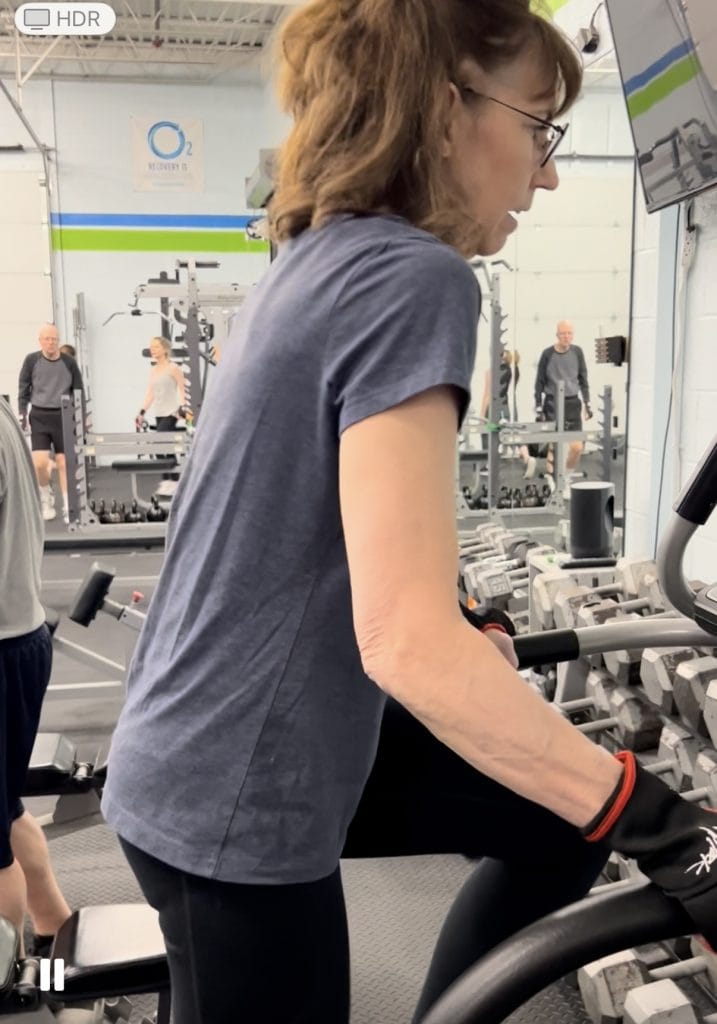Does exercise slow down your Parkinson’s? Yes and no
Exercise is good medicine for Parkinson’s disease. We’ve all heard that many times.
But does it actually slow the progression of PD?
Stated more scientifically, will exercise block the neurodegenerative process with which we who are burdened by this disease have been gifted?
The answer is no, it doesn’t.
Wait. Make that no … unless.
Don’t be misled

I’ll get to the all-important “unless” shortly. First I want to point out that what you read on the internet isn’t always true.
Oh, you knew that. Good!
For instance, I did reconnaissance and found articles about Parkinson’s and exercise that had misleading headlines, such as these:
- Tai chi may slow Parkinson’s symptoms for years, study finds
- Suburban residents use ping pong to fight progression of Parkinson’s disease
- Exercise can stall Parkinson’s disease, says society
In fact, research has not shown that tai chi itself slows progression. Ping pong won’t do it either. And exercise in general won’t keep PD at bay.

But don’t go canceling your yoga class or selling your pickleball paddle on eBay yet.
Here’s the catch
There’s a huge difference between easing Parkinson’s symptoms and slowing the disease’s trajectory.
It’s true that many forms of exercise are linked to improving symptoms of Parkinson’s. If you exercise, maybe you are sleeping better, or your “off” times from your meds are shorter. Perhaps you are less constipated, or your anxiety has decreased.
That’s a great reason to keep moving, no matter how you choose to do it.
However, the latest research shows that only high-intensity aerobic exercise safeguards dopamine-producing neurons that are most likely to go missing in PD patients.
Or, put simply, slows down the disease.
Unless we put some real vigor into our routine, the disease will continue its usual course within us, from head to tremoring foot.

Dr. Daniel Corcos is the professor at Northwestern University in Chicago behind SPARKS (Study in Parkinson’s Disease of Exercise) and the SPARKS 2 clinical trial that followed.
He determined that both moderate- and high-intensity aerobic exercise provide health benefits to people with Parkinson’s, but it remains unclear which is more beneficial.

(High-intensity is defined as keeping your heart rate at 80-85% of the maximum for your age, for a certain length of time.)
After the first two studies, Corcos found further research on high-intensity workouts was needed, and he currently is working on SPARX3 with a larger group of volunteers. Will their Parkinson’s slow down?
I, for one, look forward to seeing those results! There just might be a holy grail here, in the form of intense, sustained aerobic movement.
The bottom line
Almost any exercise can ease symptoms of Parkinson’s. Doctors will continue to tell us patients to get out there and move around.
Unfortunately, no drugs or surgeries have been able to put the brakes on the disease.

As prescribed by Corcos, studies show that “if you can exercise three to four times a week for 30 minutes with an elevated heart rate close to 80%, you will be able to slow down the rate that your disease progresses.”
At this point, high-intensity workouts show the most promise.
That’s enough to motivate me to get out of bed on dark winter mornings, make my way to the gym, and warm up with a fierce workout on the equipment.
I have little to lose and everything to gain.
Other info
Take a look at my review of a thorough and easy-to-read book on this topic.
Read why and how I exercise. (This links to the second blog post I ever wrote.)






